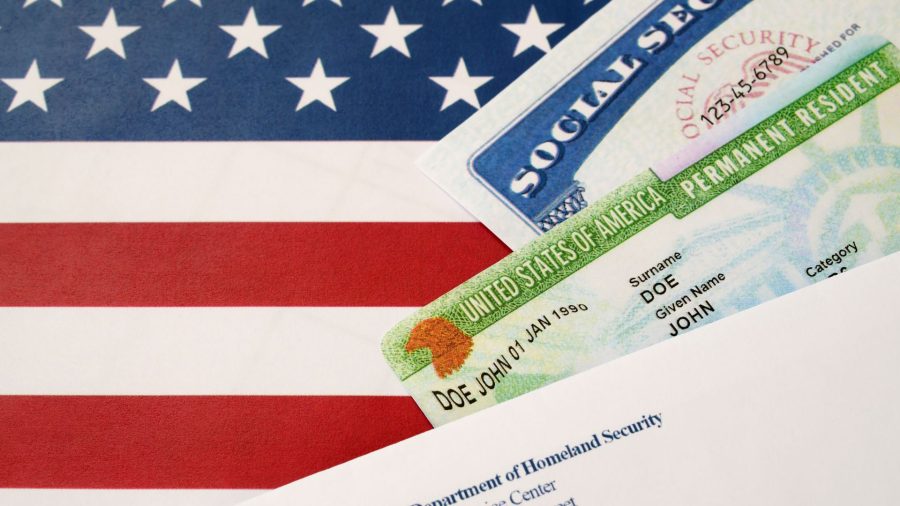The journey to becoming a permanent resident in the United States is a significant milestone for many individuals and families worldwide. A Green Card, or Permanent Resident Card, provides the holder with the ability to live and work in the U.S. permanently. However, navigating the immigration system can be challenging, especially when trying to understand the different categories and eligibility requirements for obtaining a Green Card. This detailed guide will break down the various types of Green Cards, helping you identify which one suits your situation and how to apply for it.
1. Family-Based Green Cards
Immediate Relative Green Cards
- Spouses of U.S. Citizens: Immediate relatives include the spouses of U.S. citizens, who can apply for a Green Card without being subject to annual numerical limits.
- Unmarried Children Under 21 of U.S. Citizens: Children of U.S. citizens who are under 21 and unmarried also qualify.
- Parents of U.S. Citizens: U.S. citizens who are 21 or older can sponsor their parents for Green Cards.
Family Preference Green Cards
- F1: Unmarried sons and daughters (21 and over) of U.S. citizens.
- F2A: Spouses and unmarried children (under 21) of lawful permanent residents.
- F2B: Unmarried sons and daughters (21 and over) of lawful permanent residents.
- F3: Married sons and daughters of U.S. citizens.
- F4: Brothers and sisters of U.S. citizens (if the U.S. citizen is 21 or older).
2. Employment-Based Green Cards
EB-1: Priority Workers
- Individuals with Extraordinary Ability: Applicants with exceptional skills in the sciences, arts, education, business, or athletics.
- Outstanding Professors and Researchers: Individuals recognized internationally for their achievements in a specific academic field.
- Multinational Executives and Managers: Employees of international companies who are being transferred to the U.S.
EB-2: Professionals with Advanced Degrees or Exceptional Ability
- Advanced Degree Professionals: Individuals with advanced degrees or equivalent.
- Exceptional Ability: Individuals with exceptional abilities in the sciences, arts, or business.
EB-3: Skilled Workers, Professionals, and Other Workers
- Skilled Workers: Those with at least two years of job experience or training.
- Professionals: Workers with U.S. bachelor’s degrees or equivalent foreign degrees.
- Other Workers: Unskilled workers performing labor that is not temporary or seasonal.
EB-4: Special Immigrants
- This category includes a variety of special immigrant classifications such as religious workers, certain broadcasters, and employees of U.S. foreign service posts.
EB-5: Immigrant Investors
- Investors: Individuals who invest a substantial amount of capital in a new commercial enterprise that creates jobs for U.S. workers.
3. Diversity Immigrant Visa (DV) Program
Green Card Lottery
- This program awards up to 50,000 diversity visas annually to individuals from countries with low rates of immigration to the U.S. Applicants are selected through a random lottery process.
4. Humanitarian Green Cards
Asylee or Refugee Status
- Asylees: Individuals who have been granted asylum in the U.S.
- Refugees: Individuals who have been granted refugee status can apply for a Green Card after one year of residency in the U.S.
Victims of Abuse
- VAWA Self-Petitioners: Victims of domestic violence can self-petition for a Green Card under the Violence Against Women Act.
- T Visa Holders: Victims of human trafficking.
- U Visa Holders: Victims of certain crimes who have assisted law enforcement.
5. Other Categories
Long-Time Resident Green Cards
- For individuals who have lived continuously in the U.S. for a significant period.
Registry
- Available to individuals who have been in the U.S. since before January 1, 1972, and meet other eligibility requirements.
Application Process
The application process for a Green Card varies depending on the category but generally involves these steps:
- Determine Eligibility: Identify the category under which you qualify.
- File a Petition: Depending on the category, file the appropriate petition with the U.S. Citizenship and Immigration Services (USCIS).
- Wait for Approval: After filing, wait for your petition to be processed and approved.
- Complete Biometrics: Attend a biometrics appointment for fingerprinting and photographing.
- Attend an Interview: Most applicants will need to attend an interview at a USCIS office.
- Receive Decision: USCIS will issue a decision on your application, and if approved, you will receive your Green Card.
Conclusion
Understanding the different types of Green Cards and the corresponding application processes can help streamline your path to becoming a lawful permanent resident of the U.S. Whether you’re applying based on family ties, employment, or humanitarian grounds, it’s essential to stay informed and prepared for each step of the process. For the latest information and detailed guidance, always refer to the USCIS website.





